
Symptoms of teething in a child.
The content of the article
- When, how many months, the first teeth of infants are cut?
- How to understand that the child has teeth cut: symptoms
- What do the gums look like when the teeth of infants are cut, how does the child behave?
- What temperature can a child have when the teeth are cut?
- The child’s teeth are cut - the temperature is 37.5 ºC, 38 ºC, 39 ºC, diarrhea, vomiting, runny nose: what to do?
- Can teeth be cut into 2, 3, 4 months, 5 months?
- What teeth are cut first in children?
- In what order are the teeth are cut in the kids?
- What teeth are cut most of all in children?
- How long, to what age are the first teeth in the child cut?
- Is it possible to vaccinate when the teeth are cut?
- Is it possible to introduce complementary foods when the teeth are cut?
- Video: First teeth | How to understand when to wait? How to help the baby?
For young parents, the first year of a child’s life is a real test. They have to make sure that the baby is well -fed, healthy and dry. That is why they spend almost all of their time with the child.
And when it begins to seem to them that they learned to cope with the whims of a small person, they have another serious problem. From about 6 months, teeth begin to erupt in infants, and they again become tearful, nervous and moody.
We will tell you about how this process takes place and how long it lasts.
When, how many months, the first teeth of infants are cut?
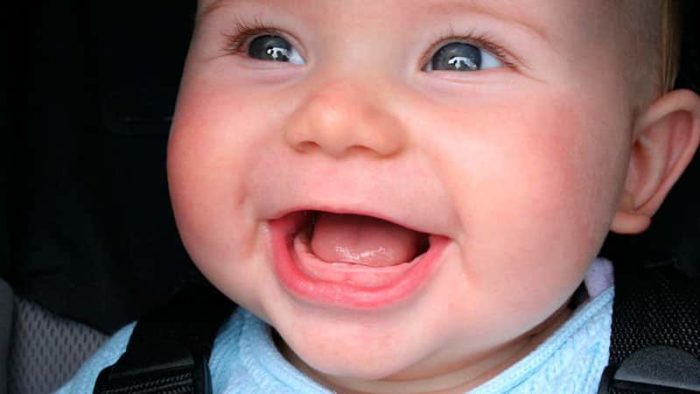
The teeth in infants begin to cut at 6-8 months
If your baby develops correctly, then the first teeth will start to cut in 6-8 months. If everything will continue to go correctly, then by the first year of life in your mouth your baby will have 8 teeth. But still, not all children appear during this period. In some, this process can begin earlier, while others have much later. In their appearance, heredity and the course of pregnancy has a direct effect.
So, if parents have teeth very early, then it is likely that in the infants it will begin to erupt before generally accepted deadlines. In the event that the pregnancy was not very good or the mother endured the baby, then this can slightly shift the time of their appearance for another couple of months.
In addition, the cause of the late appearance of teeth can be:
- Continuity. If the baby is born ahead of time, then his body will observe a miracle metabolic failure, which will provoke the appearance of the aforementioned problem. In this case, the first teeth of the baby may appear even in 1 year.
- Improper nutrition. Such a problem is observed in children who lack the right amount of nutrients. Its appearance can provoke insufficiently nutritious breast milk, as well as a complete lack of complementary foods.
- Pathologies of bone and cartilage. As a rule, pathology data are hereditary and transmitted from the parents to the child. In view of this, do not expect the appearance of the problem, and at 4-5 months, consult with a pediatrician and a children's dentist.
- Adenius. This is a disease in which the rudiments of the milk teeth are completely absent. If your child has this problem, then only a qualified specialist can help to solve it.
How to understand that the child has teeth cut: symptoms
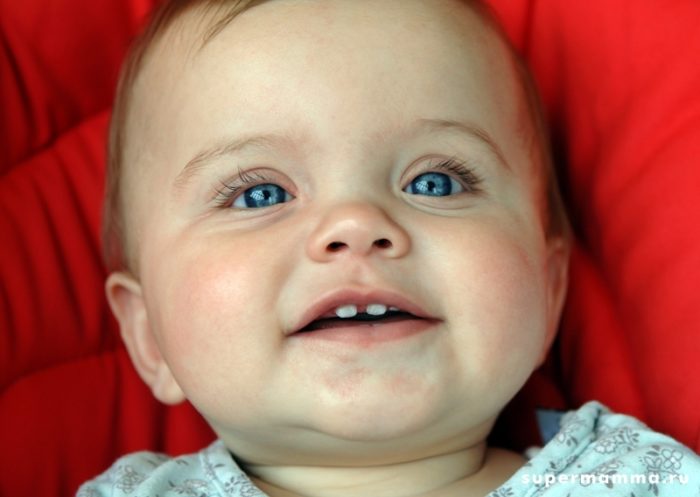
Symptoms of teeth cutting in small children
The most obvious sign of the onset of teething is the strengthening of salivation. As a rule, in this case, the saliva in a child follows almost continuously, which leads to the fact that mom has to more often change his swings.
In such a peculiar way, the body tries to help the baby easier to transfer the process of tearing the gums. Reinforced salivation reduces irritation, so that the baby feels less pain.
Other symptoms:
- Swollen gums. If the baby has the first dairy tooth in the near future, then the gum will swell a little and become darker. Swelling will be accompanied by pain, which will intensify as the tooth begins to pull the mucous membranes of the gums.
- The complete lack of appetite. The appearance of this problem is also associated with the swelling and soreness of the gum. Since during eating she begins to hurt even more, the baby, in order not to cause discomfort, will categorically refuse to eat.
- The appearance of a hematoma on the gum. Such a sign should not scare parents as indicates that the tooth is about to break through the gum tissue. The occasion to be wary is a hematoma surrounded by small watery pimples. Their appearance may indicate the beginning of the development of stomatitis.
- Diarrhea. The cause of the appearance of a liquid stool is abundant salivation. Since saliva stands out more than necessary, the baby has to periodically swallow it. This leads to the fact that it accumulates in the stomach and thereby violates the normal functioning of the gastrointestinal tract.
- Cough. This problem, as well as the previous one, provokes abundant salivation. Due to the fact that a large amount of liquid is constantly in the throat, it will fall into the respiratory tract in small quantities. This provokes the occurrence of spasm and as a result, the appearance of cough.
- Heat. Most often, an increase in body temperature begins against the background of strong fatigue of the child. If he sleeps poorly for a couple of days and practically does not rest, then this sharply reduces the body's defenses. As a rule, against this background, an unpleasant symptom appears.
What do the gums look like when the teeth of infants are cut, how does the child behave?
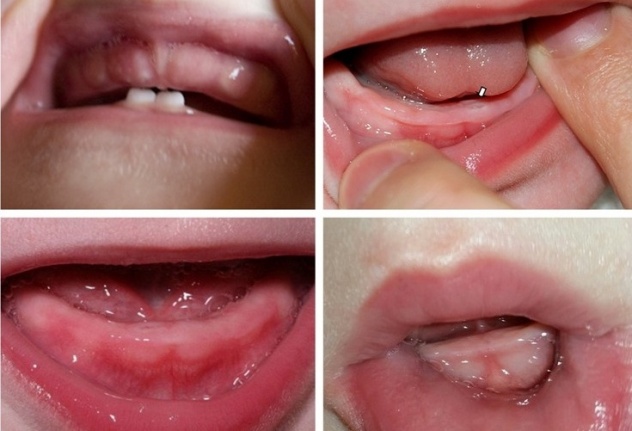
The view of the gums when the teeth are cut in the infants
Initially, I would like to clarify that the baby's teeth appear even before he is born. With the right course of pregnancy, they begin to form along with the entire bone system and cartilage. Just until a certain time are inside the alveolar processes of the jaws.
But as soon as the baby reaches four months of age, processes simulating an increase in processes begin, which leads to the fact that after some time a full-fledged tooth is shown from the gums. And since its appearance is accompanied by constant resistance of bone tissue, this inevitably affects the appearance of the gums.
So:
- At the first stage, the gum becomes loose and a slight swelling appears (the child behaves as always).
- As the tooth begins to increase in size, it swells even more and becomes crimson-red (the baby becomes tearful and restless).
- At the next stage, parents can observe the appearance of a pronounced white spot in the area of \u200b\u200bteething (the child refuses to eat and practically does not sleep).
- As a rule, after that a small hematoma appears, after which the clove itself is already shown (the baby becomes calmer and begins to eat and play a little).
Yes, and remember, if at the last stage of teething you saw that the baby began to blue the gum, then immediately seek help from a doctor. Such a symptom may indicate that the place of cutting is infected and the baby needs specific treatment.
What temperature can a child have when the teeth are cut?
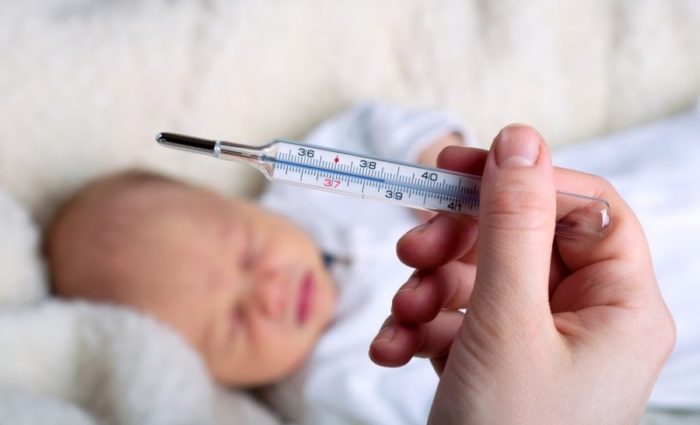
When teeth teething, the temperature can rise to 39 degrees
An increase in temperature is a characteristic symptom of the appearance of milk teeth in a baby. As a rule, reduced immunity and inflammatory process in the gums provoke this problem. Therefore, increasing indicators to 37-37.5 degrees is not a pathology and does not require additional measures.
This temperature should be shot down only if the baby feels very bad. If, even with such temperature indicators of the body, he eats a little and sleeps quite tolerably, then it is better not to interfere in the natural process. If the temperature rises to the mark of 39 degrees and lasts more than 3 days, then this is the reason for going to the doctor.
Firstly, this can signal that, against the background of a decrease in immunity, your baby has forced a viral or bacterial infection, and it requires immediate treatment. Secondly, it should be borne in mind that such indicators of body temperature are very harmful to the baby and can provoke the appearance of seizures, vomiting and fainting.
For this reason, pediatricians are advised in this case to immediately give the child antipyretic drugs and call an ambulance. It is best to lower the temperature with drugs with an analgesic effect, for example, Nurofen. In this case, you can not only lower the temperature, but also anesthetize the inflamed gums.
The child’s teeth are cut - the temperature is 37.5 ºC, 38 ºC, 39 ºC, diarrhea, vomiting, runny nose: what to do?
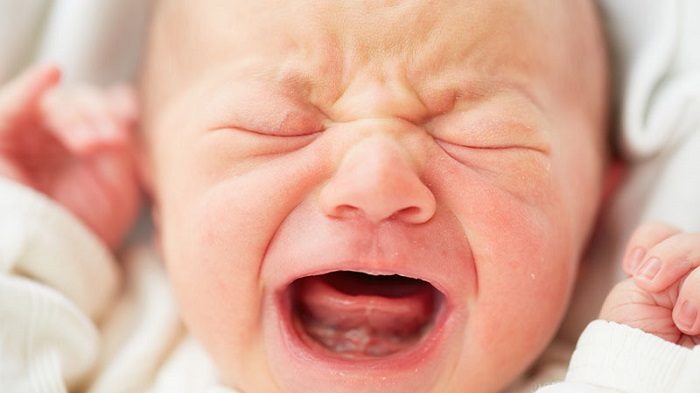
Recommendations to eliminate problems
As you probably already, high temperature, diarrhea, vomiting and runny nose are the most obvious signs of the rapid appearance of milk teeth.
In view of this, if such symptoms appeared in your baby, then do not panic, but try to alleviate his condition.
So:
- Temperature It is best to beat with paracetamol -containing drugs that gently affect the body. This group belongs to Panadol, Efferalgan and Cerafon. True, keep in mind that these funds must be used as carefully as possible. If you do not want to provoke the appearance of new problems, then give them no more than 2-3 times a day. As a rule, this is enough to keep the temperature indicators of the body under control.
- Vomiting and diarrhea It is necessary to block at once in two ways - medicines and a special diet. As for the diet, in this case it is best to abandon milk and fruit feeding and feed the child with cereals on the water. Also to eliminate such problems, you need to let the baby drink a lot of water and warm herbal teas. In addition, the child must give lactic and absorbing drugs that will help to establish the correct operation of the stomach and intestines. It can be smecta, polyphepan, enterosgel and Linex.
- Runny nose It is also necessary to treat correctly. First of all, you must make sure that the baby’s nose is clean. And this means that you will need to remove all dry crusts at least 2 times a day. In addition, you can use sprays with a moisturizing and vasodilating effect or sea salt in the form of aerosol.
Can teeth be cut into 2, 3, 4 months, 5 months?
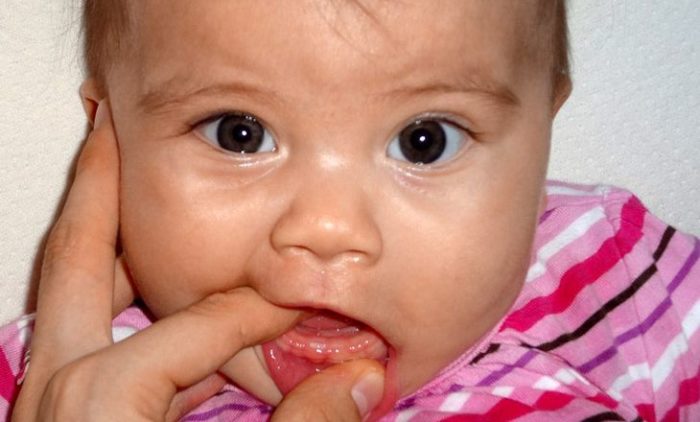
Teeth can start cut and at 2 months
Although it is believed that the teeth should start normally with about 6 months of life, in some cases they make a surprise and appear in 2, 3, 4 and 5 months. Of course, this causes excitement in young parents, and they begin to suspect the development of some pathologies in their child.
In fact, parents should be alarming more too much later tooths. As practice shows, early teething is most often associated with the lifestyle of the mother. If she carefully replenished the reserves of calcium and vitamin D, then contributed to the milk teeth in her baby to grow a little earlier.
Vitamin complexes can have the same effect on a small person, especially if the mother consumed them in 2 and 3 trimester of pregnancy. It is also worth considering that the gender of the child has a direct effect on this process. As a rule, in girls it begins much earlier than in boys. As you can see, the earlier appearance of teeth in a child is not a pathology.
But still, you must remember that at this age the child will not be able to take care of them on his own and subsequently this can lead to their early loss. In view of this, so that your baby does not have the so -called bottle caries, try to clean its mouth with a soft toothbrush or cotton rag every day.
What teeth are cut first in children?
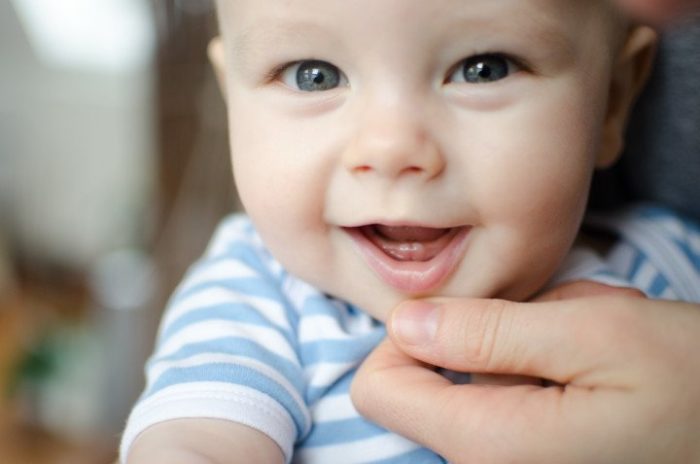
The first in infants are the lower incisors.
As a rule, teeth in infants are cut according to a certain graphics. The first almost always 2 lower incisors appear. Thus, nature takes care that the baby can gnaw at his first complementary foods. With the interval, literally a few weeks appear 2 upper incisors. True, in this case, there are exceptions to the rules. Sometimes the upper incisors refuse to grow and do not appear after a month and not two after the appearance of the lower ones.
Most often this is due to the density of the gum mucosa. It is likely that the clove has small sizes and he simply does not have enough height to break through the gum. In this case, you will have to help him do it. Initially, you can try to do easy massage. By stimulating blood flow to this place, you will increase the growth of the cutter, and it will be able to break through the mucous membrane. If such a manipulation does not help, you will have to turn to the children's dentist for help.
In what order are the teeth are cut in the kids?
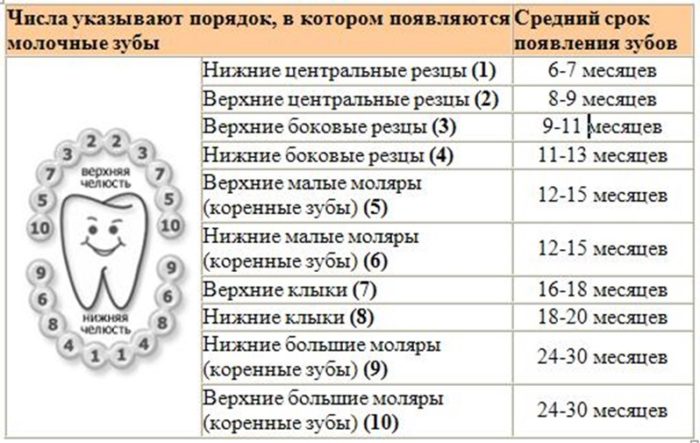
Teeth cutting table in a small child
In order for you to understand how your teeth are cut, we bring to your attention a table in which this process is described in detail.
True, do not forget that it indicates the average dental dates, which means that they can appear both earlier and a little later.
What teeth are cut most of all in children?
In principle, all teeth are cut quite painfully, but still among them there is a couple that causes the most discomfort as much as possible. As a rule, the children tolerate the appearance of the lower and upper fangs worst.
Strong discomfort when they appear is due to their thickness and uneven acute elite. Because of this, during the teething of the gum, the wound is quite large and more painful.
How long, to what age are the first teeth in the child cut?
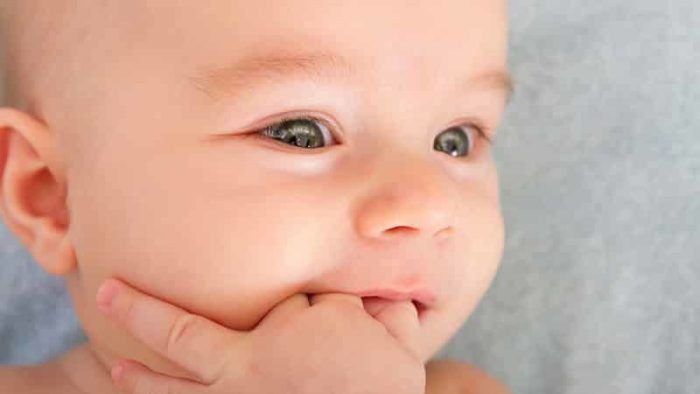
Usually, up to 2 years in the child, all teeth are cut in the mouth
To answer this question, one must understand that from the manifestation of the first symptoms to the moment the tooth appears can pass from a week to a month. Therefore, if your child has intensified salivation and the gum has slightly swollen, then this does not yet mean that tomorrow the first cutter will appear in his mouth.
If the process of growth of the clove is quite slow, then you can wait for its appearance for quite some time. But when it increases sufficiently in size, he will be able to break through the upper layer of the gums in 2-3 days.
As for what age teeth are cut to, as a rule, the latter appear in approximately 2-2.5 years. If the teeth began to appear very early, then this process can end in 1.5 years.
Is it possible to vaccinate when the teeth are cut?

Vaccine when the teeth are unwilling to cut
I immediately want to say that teething is not a contraindication for vaccination, so some pediatricians, without listening to any parents' arguments, send the baby to the procedural office. But still, before agreeing to make the baby a vaccine, watch his behavior a couple of days.
If the teeth are cut without any problems, then you can carry out vaccination, strictly following the generally accepted calendar. If your child is very capricious and practically does not sleep, then you should refrain from carrying out the procedure.
It is impossible to vaccinate on time tooths if the child is observed:
- Vomit
- Diarrhea
- Heat
- Cough
- Nasal congestion
- Lethargy and apathy
Is it possible to introduce complementary foods when the teeth are cut?
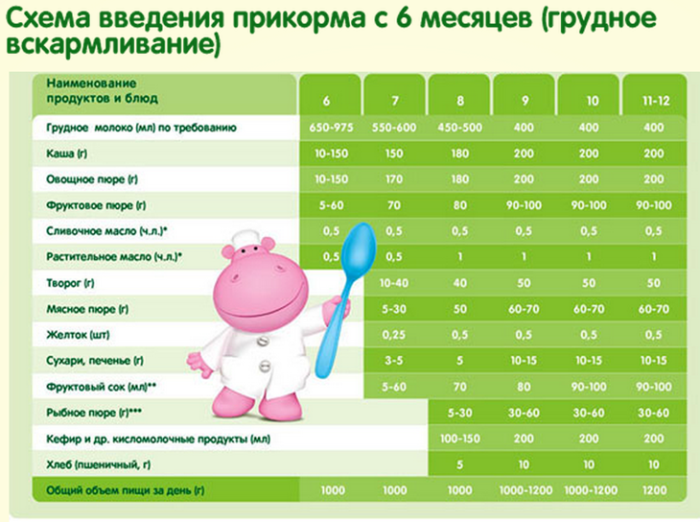
Recommendations for the introduction of complementary foods
In principle, pediatricians do not have a single answer to this question. Some of them are categorically against this and recommend that parents wait for the tooth that the tooth is erased, and only then give the baby to try new dishes. As a rule, they argue their opinion by the fact that the appearance of teeth is a strong stress for a fragile child's body, and if at this moment the digestive system is still overloaded, then the baby’s condition may worsen.
Other pediatricians see nothing terribly in the introduction of complementary foods against the background of teething. They believe that these processes do not affect each other, provided, of course, that complementary foods will be administered correctly. The only thing they advise is to refuse for this time to acquaint the baby with rough food. In view of this, during this period, you can give a baby exclusively fruit and vegetable puree and various cereals.
True, there is also what they converge in the same way. Both supporters and opponents of complementary foods during the teething period believe that this is categorically impossible if the child has severe diarrhea and vomiting.
